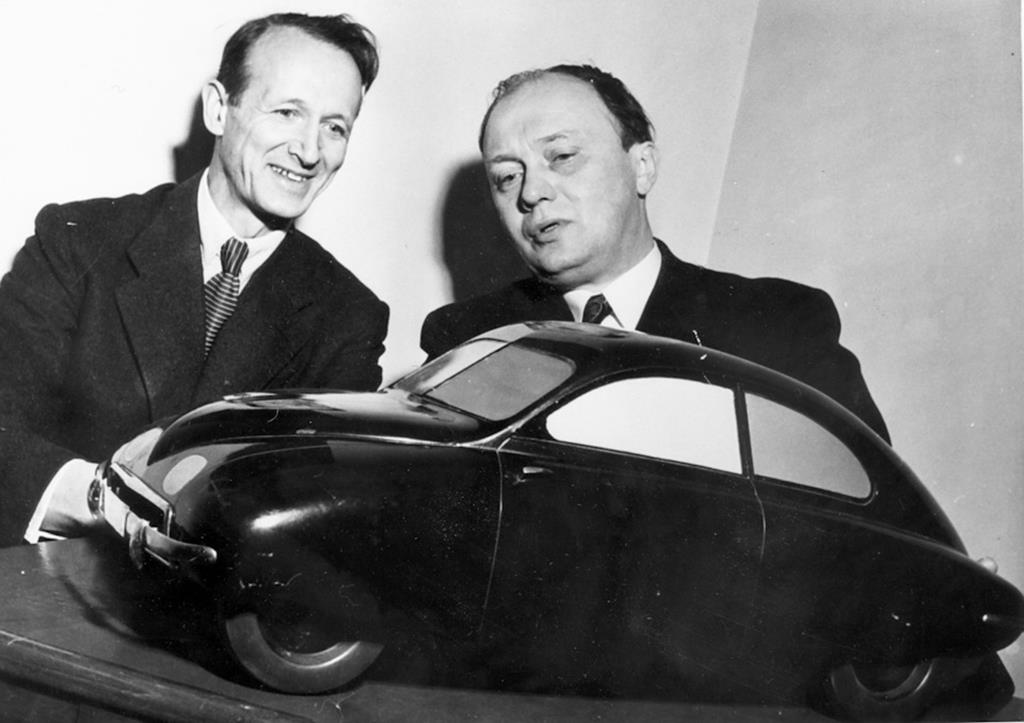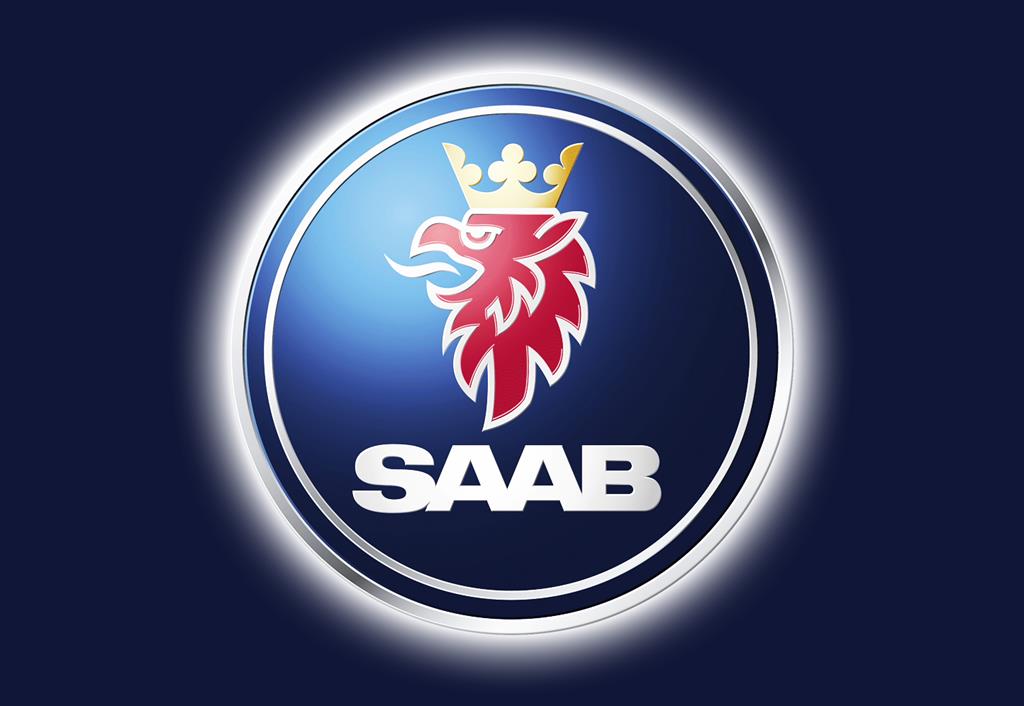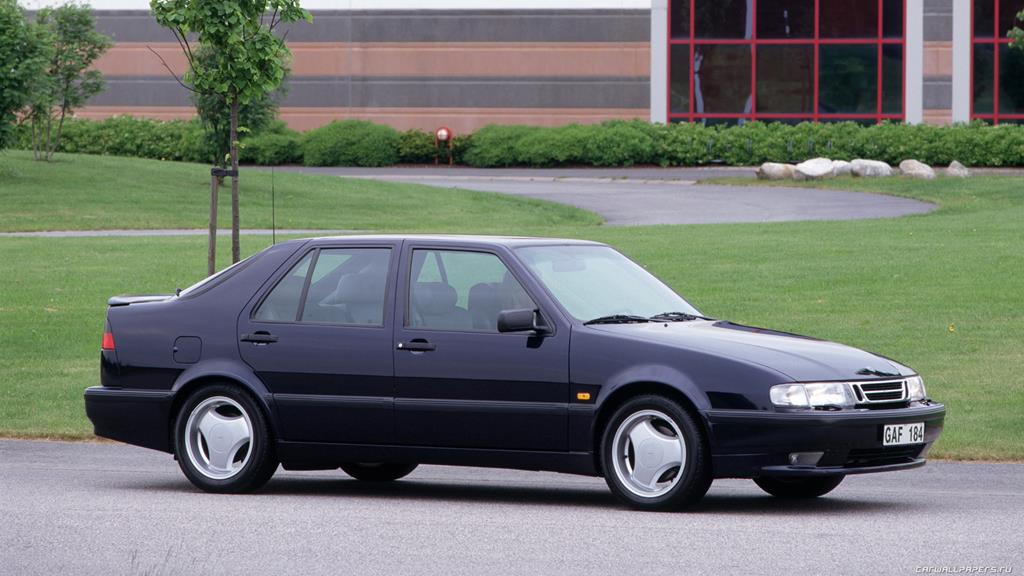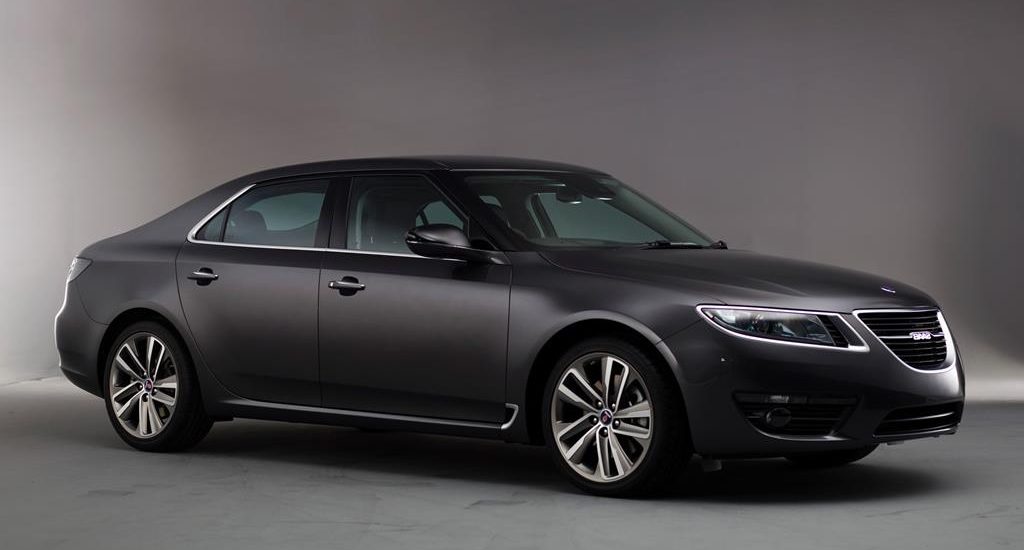SAAB cars (Saab Automobile AB) were produced for 75 years (from 1937 to 2012). The model range of the brand consisted of sedans, wagons and crossovers of various classes. Production facilities of the company were located in several countries of the world, including Mexico, where the factory, opened jointly with General Motors, worked. Therefore, it would be strange not to learn about the products of a quite well-known Swedish automotive manufacturing company. Despite its bankruptcy, SAAB cars were sold all over the world, and are still found on the roads of many countries. Let’s try to characterize the advantages and disadvantages of this brand, which entered the history of vehicles with an impressive model range.
SAAB logo as the embodiment of the car creation history
The logo of the Swedish brand SAAB is decorated with a full-face image of the Junkers Ju-86, a twin-engine bomber. This means that SAAB cars have aviation roots. The name Svenska Aeroplan Aktiebolaget meant “Swedish Aeroplane Company Limited” or, simply, SAAB. It was this group that was formed in 1937 in the Swedish town of Trollhättan (translates as “troll’s bonnet”) for the creation of military aircraft. Among the first developments of the company from Trollhättan, the strategic bomber SAAB B-3 – a licensed version of the German Junkers Ju-86. But in 1945 the Second World War ended, and the production of military aircraft had to be diversified. As the company’s potential was high-tech, SAAB directors Ragnar Vargren and Sven Otterbek decided to try to produce cars. Before that, cars were already produced in Sweden – by the Volvo concern. However, they were available to few, since high quality was projected into high cost. There was a need for inexpensive “people’s” car that could meet the demand of customers.

Godfather of the SAAB-92 project Gunnar Ljungström was an excellent engineer. He was entrusted with the car creation, although until that moment Ljungström hadn’t have the experience of the automotive industry. In addition, he was so-so designer, and even involved in the development people who had little understanding of cars. Among 15 engineers of the SAAB-92 project, there were only three with driver’s licenses. The prototype was created entirely from wood, and only then a steel body was manually manufactured.
Despite various delicate moments, there were front-wheel drive, pinion-and-rack steering and independent suspension in the car model. The body was so streamlined that even the wheel arches were closed. The frontal resistance of the car in the wind tunnel (then, in the 1940s, there was no computer simulation yet) showed fantastic 0.32. Today, Lada Priora Cx has a similar index of frontal resistance. The streamlining of the car was not too impressive for the company’s management, however G. Ljungström insisted on his variant, saying: “If such a design will allow the owner to save 100 liters of gasoline pear year, I don’t care that the car is compared with a frog!”.

As the result, SAAB turned out to be powerful, maneuverable (because it weighed little), well-controlled and even won the race! He had a stunningly warm cabin, thick doors and green color, because there was a huge amount of aviation paint in the concern’s warehouses. Later, they redesigned closed wheel arches a little, modified headlights and grille. But in general, the car had its own “Saab” engine – two-cylinder, two-stroke. With a volume of just under 800 cubes, the engine reached 25 horsepower, it used the simplest thermo-siphon cooling system, as well as the overrunning clutch required for the two-stroke engine in braking mode. A kit for this was a simple three-speed mechanic with an unsynchronized first gear. The SAAB 92 did zero to 60 in about half a minute, and the car could not accelerate faster than 105 km/h physically. Since 1949 (when mass production began), until 1955, the Swedes made about 20,000 SAAB 92 cars. However, people needed three times more. Already by the 1980s, the 93 and the 96 were produced. The creation of the Saab 95 wagon allowed the company to attract attention.
But the familiar crowned griffin on the symbol of Swedish SAAB cars appeared only in 1968.

The increase in engine capacity was expressed in the development and implementation of the turbocharger system, created in 1976.
The Saab 93 is the first model that appeared on the foreign market. This car became the basis for the creation of a Sonett sports car. It was an interesting roadster with a plastic body and a powerful motor.
Another creation of Swedish designers, the 96, is considered to be legendary. For two decades, this car didn’t lose its popularity and brought a good income to its creator. In total, more than half a million copies were sold. The company Saab was the pioneer of business-class cars, although it didn’t even know about it. The 99 was solid and safe, which was marked by reputable periodicals. The company’s success in this area was strengthened by the release of the Saab 9000, which America recognized as the best big car.
The merger of the brand SAAB and the company Scania – Vabis, specialized in the production of trucks, led to the creation of a new logo and an increasing in production area. In 1989, the Swedish brand became interesting to the concern General Motors from America. During their short period of joint cooperation, the Saab 900 was created. There was simply no safer car at that time.
The beginning of the XXI century was related to the financial difficulties that forced General Motors to sell off some of its divisions. The SAAB brand was included in this list. Its new owner was the manufacturer Spyker from Holland, which produced only supercars. But success was not to be expected here too, the brand was even declared bankrupt. The history of SAAB could have come to an end at the end of 2011. The situation was saved by National Electric Vehicle Sweden (NEVS). In September 2013, Saab had resumed production of cars, but later went bankrupt. The company stopped production, and the Swedish government revoked the license to use the brand “SAAB”.
In 2013, there were only an alphabetic (text) version of the logo on passenger cars. But buses and trucks have the old familiar look of SAAB emblem.
The SAAB 9000 – Swedish executive car
The first in the history of the Swedish automaker SAAB executive model (belonging to the “E” segment according to the European regulations) was the SAAB 9000. It was developed with the active participation of the Italian company “Fiat Automobiles”. The two “hypostases” of the model: a liftback and a sedan.

The official presentation of this car took place in May 1984, and initially a variant with a five-door body was assumed, and already in 1985 its serial production started, but the tree-box car appeared only in 1987. The 9000 was on the line until spring 1998, while throughout its “career” it was constantly subjected to modernization and refinement.
Despite the archaism of this model in comparison with modern cars, the SAAB 9000 is pretty nice and its appearance is very proportional. There are no special design frills, but there are no frank contradictions either. Ordinary wheel arches, sidewall flatness, accuracy of bumpers and appropriateness of lighting equipment quite actively attract the eye, and therefore motorists accept this model. This “Swede” is assembled very qualitatively, thought out in terms of ergonomics, despite the old-fashioned interior design. It’s difficult to find fault with anything. There is a classic large “helm” with a four-spoke design inside, a simple but extremely clear combination of instruments and a laconic central console decorated with a climate control panel, a stereo and some other control units.
The main advantage is a spacious cabin. On the front there are comfortable seats with sufficient adjustment intervals, but poorly expressed lateral bolsters. The rear passengers are given a full-fledged sofa with a somewhat flat profile and a soft filler.
The engines of the “Swede” were equipped with two variants of the gearbox – a 5-speed “mechanics” or a 4-speed “automatic” (the drivegear without an alternative – the front axle is driven).
Even in the simplest configuration, the “Swede” can boast: there are front and side airbags, power windows of all doors, air conditioning, on-board computer, alloy wheels, quality “music”, electric mirrors, ABS, power steering and much more. While the “top” versions also have: leather trim, heater and front-seat electronics, automatic climate control, power sunroof and other options.

It is impossible to characterize and even simply list all the features of the Swedish auto brand SAAB in this article. But we still tried to do something. However, no matter what car you own, the “Swede” or another, you can drive it only when you have a driving license. Ideally, if it is an international one. And it is quite easy to process it – right on our website.


Published October 01, 2018 • 9m to read


